by Naomi L. | March 9, 2016 | Blog, Creative Writing, Off The Bookshelf |
How about a new book recommendation for this year’s reading list? This one’s a little different from my other Off The Bookshelf entries as it’s actually a nonfiction tale, and a marine biology-themed one at that! I read this book last year for school, and I was so enraptured by this incredible true “scientific epic” that I had to share it on my blog.
So if you’ve never heard of the coelacanth, or you have but want to learn the details of its history, you’re in for a treat! I hope you’ll enjoy my review of this must-read book: A Fish Caught in Time: The Search for the Coelacanth by Samantha Weinberg.
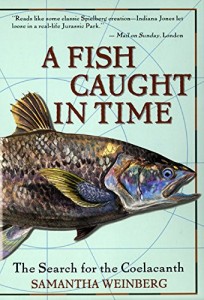
A Fish Caught in Time: The Search for the Coelacanth, by Samantha Weinberg
Summary
A Fish Caught in Time tells the true story of the coelacanth (SEE-luh-kanth), one of the most mysterious and fascinating fishes (yes, “fishes“) in scientific history, as written by English journalist Samantha Weinberg. Originally published in 1999 by HarperCollins, the book recounts the events surrounding this prehistoric fish, from the shocking discovery of a living specimen (Latimeria chalumnae) in 1938 to the discovery and study of a second species (Latimeria menadoensis) 60 years later. The narrative relates these events from the perspective of the researchers who dedicated much of their time and resources to studying this fish, all of whom played an important role in the amazing story of the elusive “King of the Sea”.
Review
I read this book last year in preparation for a Vertebrate Zoology class I had to help teach as part of my Master’s program. My lesson was about the Sarcopterygii class of fishes, so my professor lent me his copy of A Fish Caught in Time as supplementary material for telling the story of the coelacanth. By the time I was done, I was ready to teach an entire semester on this one fish. I never thought I would feel so strongly about any one fish, but then again, the coelacanth is no ordinary fish.
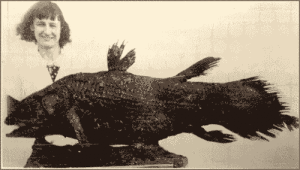
Marjorie Courtenay-Latimer with the modern coelacanth (Latimeria chalumnae) she discovered in 1938
To summarize, the coelacanth was long thought lost to history by the Cretaceous-Paleogene extinction event that wiped out three quarters of the plant and animal species living on Earth (most famously the dinosaurs). It was known only by its fossil record for (almost exactly) 100 years, until, to the world’s surprise and excitement, a living specimen was fished off the South African coast in 1938. Over the next six decades, the coelacanth would be the focus of global headlines, political plays, and scientific rivalries, all the while remaining an enigma to the world that it continues to captivate to this day.
A rare example of a nonfiction story told in a highly narrative form, A Fish Caught in Time does an excellent job of capturing the majesty and mystery of the coelacanth while staying true to the history of its discovery and study. Ms. Weinberg paints such a vivid picture of this 60-year-long story that I couldn’t help but be completely drawn in, as if I were living the story along with the real-life characters: the excitement of discovering the coelacanth wasn’t extinct after all, the rush to find out where it had been hiding for the past 65 million years, the desperation to not only capture a living specimen but keep it alive at the surface, the awe that only a lucky few in history have ever known of watching this deep-sea fish swim in its natural habitat. I’d even go as far as to say that it’s impossible to read this book and not fall in love with the coelacanth!
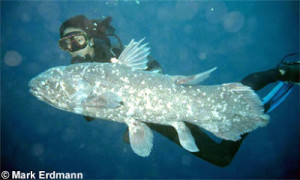
Arnaz Erdmann swimming with the Indonesian coelacanth (Latimeria menadoensis)
A fair note of warning: oftentimes the story focuses more on the researchers who dedicated their lives to studying the coelacanth than on the coelacanth itself. Readers who hope to gain an insight exclusively into the life of the fish may find this a bit off-putting, but then again, it hardly makes sense to attempt to recount the history around the animal without offering even a glimpse into the lives of the people who shaped that history. It’s much more than a story about a fish; it’s a lesson about what it means to be a researcher. It takes intelligence, curiosity, patience, an unquenchable thirst for knowledge, and an unrelenting passion for science, all of which shine through the pages of this brilliant narration of scientific truth.
Overall, A Fish Caught in Time is a captivating read that any science enthusiast will enjoy. I owe much of my appreciation for the coelacanth to this book, and I recommend it to anyone who wants to immerse themselves in a world of marine biology without being overwhelmed by the technicalities of it all. As quickly becomes evident from the first chapter, science doesn’t have to be fictional to blend well with creative writing!
Inspiration
I love science and I love a good story, but it’s rare that I get to enjoy both at the same time, or at least in the same book. A Fish Caught in Time offers an opportunity to glimpse the joy and passion that goes into conducting good science by presenting it in an enjoyable narrative format. Though much research has gone into understanding the coelacanth, A Fish Caught in Time never conveys that research in a manner too difficult for the layman to comprehend or appreciate, making it an unusual kind of literary gem: a scientific subject made accessible to the general public, that is, a community of non-scientific readers.
So if you appreciate science and a good story based on true events, A Fish Caught in Time may be just the inspiration you need for your creative writing! It certainly has been for me; in my opinion, there’s never too much writing inspiration to be found in science!
by Naomi L. | March 2, 2016 | Blog, Creative Writing |
So I just discovered Silver Threading‘s Writer’s Quote Wednesday blogging event, a collaboration with Ronovan Writes‘ Be Writing on Wednesday event, and I thought to myself, “Hey, that sounds like fun! Maybe I should give it a try!” I do love quotes, after all, and writers can never have or share too much creative inspiration!
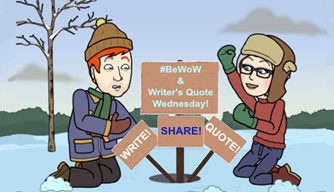
The quote I chose to share for this event is one of my all-time favorites: Albert Einstein’s wise words on the importance of imagination compared to knowledge.
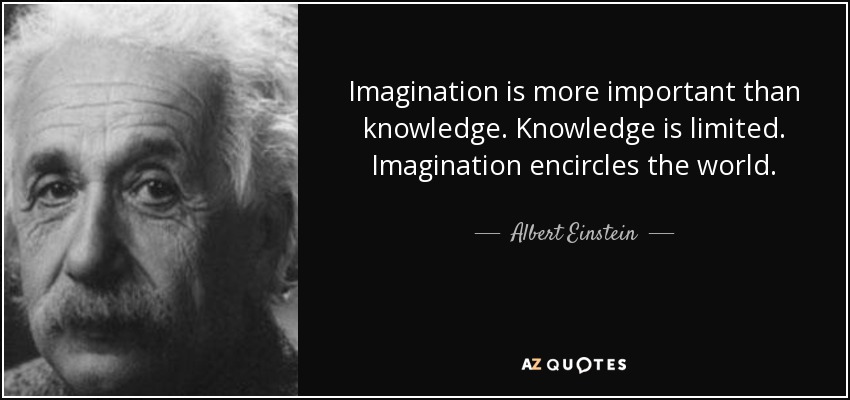
I am enough of an artist to draw freely upon my imagination. Imagination is more important than knowledge. Knowledge is limited. Imagination encircles the world. – Albert Einstein
I first read the short version of this quote on a poster hanging in my seventh grade Science teacher’s classroom, and I remember that it instantly inspired me, especially since I had already decided by then that I wanted to be both a writer and a scientist. I always liked to believe that I could draw from both these sides of myself to succeed in life, that the imaginative artist in me would empower the knowledgeable scientist and vice-versa. This quote validates my belief that the power of the human mind is more than just what a person knows, and having come from one of the most brilliant minds in the world makes it all the more motivating. To this day, Einstein’s words remind me of the true meaning of education and intelligence: it’s not the number of facts you can memorize that matters, but the capacity you have to think and explore beyond the limits of this restricted world. Fellow writers, take heart: if you’re brave enough to set your imagination free, you can accomplish anything!
What’s your favorite inspirational quote? Be sure to check out #WritersQuoteWednesday and #BeWoW to share it with the rest of us!
#WritersQuoteWednesday is a weekly blogging event by Colleen Chesebro of Silver Threading. #BeWoW is a weekly blogging event by Ronovan Hester of Ronovan Writes. Be sure to check out both these authors’ blogs for your weekly dose of inspiration! Happy writing!
by Naomi L. | February 24, 2016 | Blog, Creative Writing, What If? Writing Prompts |
It’s the month of love, so why not celebrate creatively with some more “What If?” Writing Prompts? It’s been a long time since I’ve shared a set of love and peace prompts, so here are a few new ones for you to try! See what stories you can create from these ideas! Enjoy!
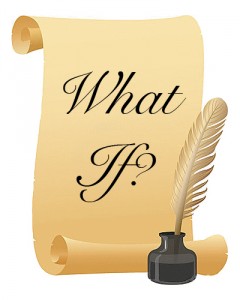 What if… the world’s only religion/faith were Love?
What if… the world’s only religion/faith were Love?
What if… social tolerance were a subject taught in schools worldwide?
What if… the differences among people were only ever cause for celebration, not conflict?
What if… every nation made children’s education a top priority?
What if… for a brief time, there were no wars happening anywhere in the entire world?
Have fun writing more stories about love and peace!
If you have any “What If?” writing prompt suggestions (for any theme), please feel free to share them in the comments below. Ideas I like may be featured in future “What If?” posts, with full credit and a link to your blog (if you have one)! Also, if you’ve written a piece based on an idea you’ve found here, be sure to link back to the respective “What If?” post. I would love to see what you’ve done with the prompt! Thank you!
by Naomi L. | February 17, 2016 | Blog, Creative Writing |
Valentine’s Day has come and gone, but love goes on and on! If you celebrated this year, I hope you had a wonderful Valentine’s Day (or Singles Awareness Day; I’m not judging). If, however, you found yourself lonely and longing for a significant other with whom to share the day, then fear not! You may be surprised to learn that there’s one commonly underrated trait that can help you attract a partner: proper grammar!
Grammarly partnered with eHarmony to determine whether the writing skills displayed in people’s online dating profiles affect their chances of finding romance, and, in true Grammarly fashion, they summarized the results along with other online dating statistics in an infographic. So if you’re searching for love, be sure to consider these helpful grammar tips; they may save your chances at romance! Good luck!

Today’s creative writing post is brought to you by Grammarly, the World’s Best Grammar Checker. For more information on Grammarly, visit https://www.grammarly.com/grammar-check. Thanks for reading! Happy writing!
by Naomi L. | February 10, 2016 | Blog, Creative Writing, Tropes |
It’s almost Valentine’s Day, and that means it’s the best time of year to indulge in some romance! To mark the occasion, I went through some of the romantic tropes on TV Tropes and put together a list of my favorites. So to help inspire your romantic creativity for Valentine’s Day, here’s a list of my top five romance tropes. Enjoy!
1) The Power of Love
Of all the romantic tropes I’ve ever seen in fiction, The Power of Love is by far my favorite. It’s the main reason romance has always been one of my favorite genres. I have a weakness for stories in which love triumphs over hate and helps characters grow and change for the better. Call me a hopeless romantic, but I honestly believe that love can indeed conquer all. This one doesn’t even have to be a romantic trope, as love comes in many forms, none of which are necessarily the strongest or most influential of all. Whether it’s the healing magic of True Love’s Kiss or the driving force behind a mother and father‘s protection of their children, The Power of Love can change the world!
2) Love at First Sight
I admit it’s ironic that this trope is on my list given that I’m not sure I completely believe it can happen in real life, but I absolutely love reading about true love at first sight in fiction, especially when it works out in the end. There’s just something so uplifting about the idea of two people instantly connecting on a spiritual level and knowing beyond a shadow of a doubt that they’re meant to be together. Love at First Sight can go either way: the couple may really be perfect for each other and eventually earn a Happily Ever After, or they may simply be sharing a passion that’s doomed to burn out (in which case it’s really more of an infatuation at first sight).
Of course, if the two lovers are a good match but the story calls for them to be kept apart anyway, this can become a tale of…
3) Star-Crossed Lovers
Admit it, you knew this was coming: another chance for me to gush about Romeo & Juliet! The most famous Star-Crossed Lovers in literature (and the trope namers), the young protagonists of my favorite romantic story shared a passionate and dangerous love affair that was doomed to a tragic end. Though a strong case can be made that Romeo and Juliet were indeed soulmates, the sad truth is that their love was not strong enough to overpower fate. Of course, it’s still fair to say that their love did triumph over hatred in the end: by taking their own lives to be together eternally, they finally ended the feud between their families.
The tale of Star-Crossed Lovers is one of the greatest literary devices that can demonstrate the powerful contrasts between love and hate, and that’s probably what makes it one of the most enduring plot structures in the history of romantic fiction. It seems no matter how many times this tragic story is retold, Romeo & Juliet never gets old!
4) Childhood Friend Romance
On the other side of the love spectrum, we can also see two people who have known each other their whole lives but who only develop feelings for each other in maturity. Some of my favorite love stories involve a Childhood Friend Romance, a story about characters who’s affection for one another started at a young age and eventually became the foundation for a solid loving relationship (my favorite example is the seven-book buildup to the relationship between Hermione Granger and Ron Weasley).
It doesn’t have to be a romance that began in childhood, of course; my parents, who met in their young adult years, are a perfect example of how any relationship that started as friendship can blossom into everlasting love. Still, there’s something about a story of two lovers who were meant to be together since childhood that warms my heart every time. Can you say “D’awww”?
5) Babies Ever After
Whether two characters fell in love at first sight or grew to love each other over time, a happy ending is a happy ending, and my favorite kind of happy ending is one that keeps on going. I don’t know about you, but I’m not always satisfied with just “and they lived happily ever after, The End”; I want to see what happens next! That’s why I love a good epilogue, especially one that shows the main characters in the future with children of their own!
I’ve made it only too clear in the past how much I love the Babies Ever After trope: the most popular story I’ve ever written is a second-generation fanfiction set in the universe of my favorite video game characters. The idea of the canon characters having families in the future was so fascinating to me that I just couldn’t resist writing my own story about it! Not that I have anything against the choice not to have children; I just happen to have a soft spot for family love and next-generation characters. May the stories live on!
What about you? What are your favorite romantic tropes?
by Naomi L. | February 3, 2016 | Blog, Creative Writing, What If? Writing Prompts |
Is it February already? Honestly, where does the time go? To kick off Valentine’s month, why not have some fun with a few “What If?” Writing Prompts in the romance genre? See what tales of love you can spin around these ideas! Enjoy!
 What if… you accidentally drank a love potion that made you become infatuated with the first person you laid eyes on?
What if… you accidentally drank a love potion that made you become infatuated with the first person you laid eyes on?
What if… you lived in a society where you were the only person who believed in love?
What if… you developed feelings for someone you hated when you first met?
What if… someone you thought was your worst enemy turned out to be in love with you?
What if… you had a highly intuitive pet who kept trying to lead you to your soulmate?
Have fun writing some more romantic stories!
If you have any “What If?” writing prompt suggestions (for any theme), please feel free to share them in the comments below. Ideas I like may be featured in future “What If?” posts, with full credit and a link to your blog (if you have one)! Also, if you’ve written a piece based on an idea you’ve found here, be sure to link back to the respective “What If?” post. I would love to see what you’ve done with the prompt! Thank you!






 What if… the world’s only religion/faith were Love?
What if… the world’s only religion/faith were Love?
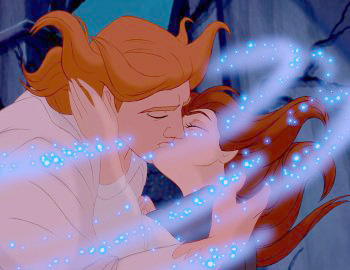

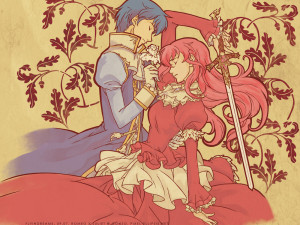
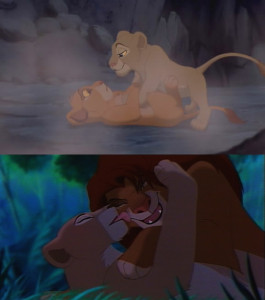
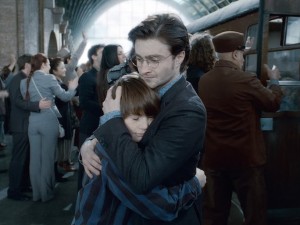

Recent Comments